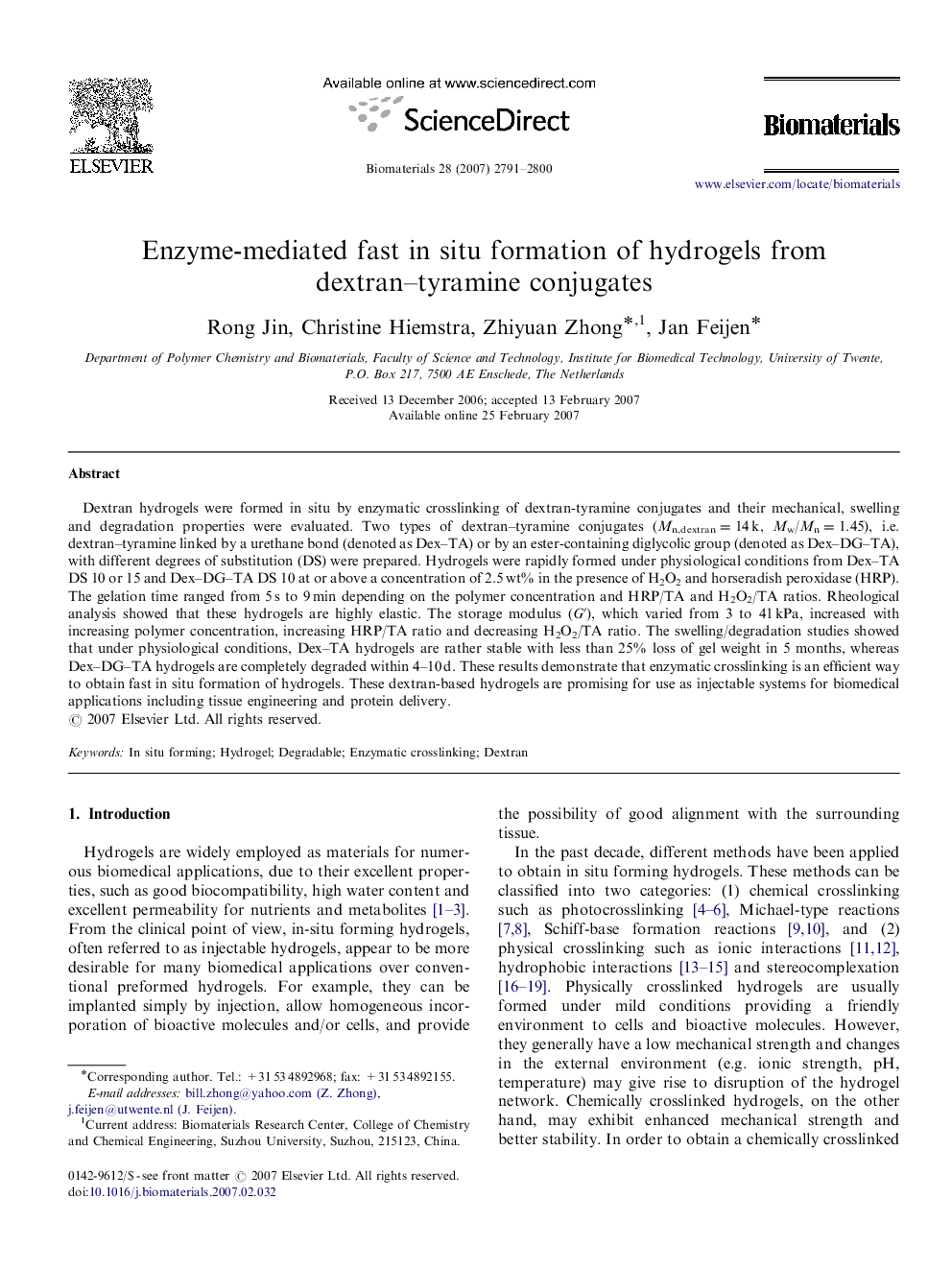| کد مقاله | کد نشریه | سال انتشار | مقاله انگلیسی | نسخه تمام متن |
|---|---|---|---|---|
| 9985 | 657 | 2007 | 10 صفحه PDF | دانلود رایگان |

Dextran hydrogels were formed in situ by enzymatic crosslinking of dextran-tyramine conjugates and their mechanical, swelling and degradation properties were evaluated. Two types of dextran–tyramine conjugates (Mn,dextran=14 k, Mw/Mn=1.45), i.e. dextran–tyramine linked by a urethane bond (denoted as Dex–TA) or by an ester-containing diglycolic group (denoted as Dex–DG–TA), with different degrees of substitution (DS) were prepared. Hydrogels were rapidly formed under physiological conditions from Dex–TA DS 10 or 15 and Dex–DG–TA DS 10 at or above a concentration of 2.5 wt% in the presence of H2O2 and horseradish peroxidase (HRP). The gelation time ranged from 5 s to 9 min depending on the polymer concentration and HRP/TA and H2O2/TA ratios. Rheological analysis showed that these hydrogels are highly elastic. The storage modulus (G′), which varied from 3 to 41 kPa, increased with increasing polymer concentration, increasing HRP/TA ratio and decreasing H2O2/TA ratio. The swelling/degradation studies showed that under physiological conditions, Dex–TA hydrogels are rather stable with less than 25% loss of gel weight in 5 months, whereas Dex–DG–TA hydrogels are completely degraded within 4–10 d. These results demonstrate that enzymatic crosslinking is an efficient way to obtain fast in situ formation of hydrogels. These dextran-based hydrogels are promising for use as injectable systems for biomedical applications including tissue engineering and protein delivery.
Journal: Biomaterials - Volume 28, Issue 18, 2007, Pages 2791–2800